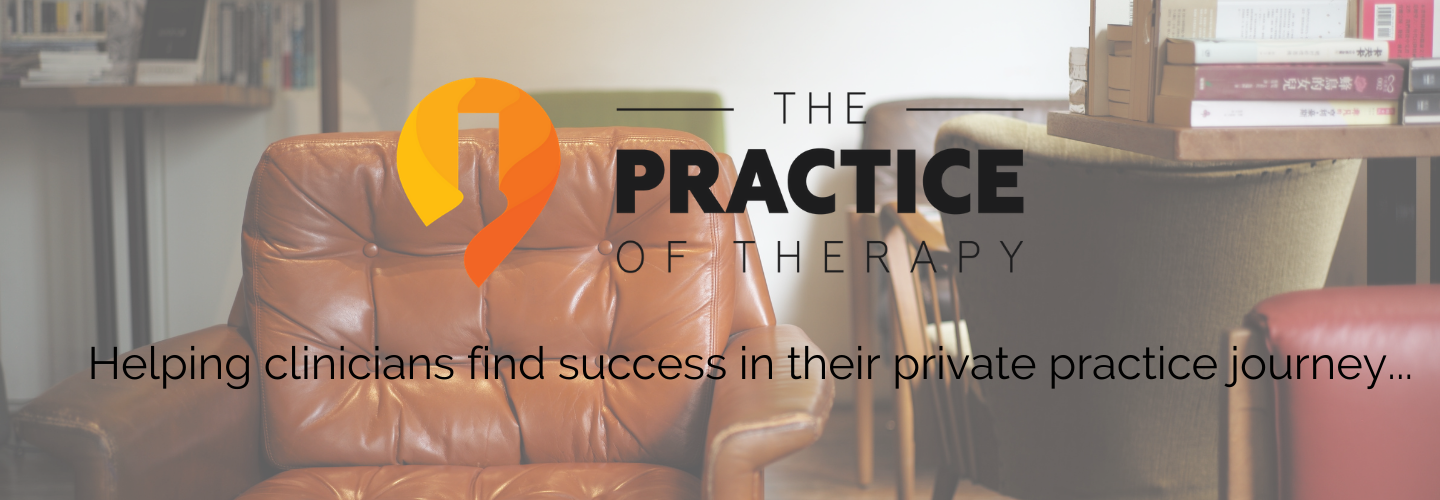In this episode of the Practice of Therapy Podcast, Gordon goes solo and talks about his recent invite to Joe Sanok’s Killin’ It Camp. Then, we find out why Gordon wants to assist others with their finances and the number one reason most private practices fail. Later, Gordon helps with analyzing current finances, and we discover why Gordon is on an insurance panel. Lastly, we learn how to break down our expenses, profit, and taxes.
>>Get the FREE Financial Analysis Guide<<
Gordon’s “Why”
Gordon reveals his “why” for wanting to assist others with their finances. Then, Gordon divulges the number one reason most private practices fail because the owners have not prepared themselves financially for owning a business. Also, owners do not put the proper systems in place to fully understand how businesses work. Most private practices go under because the owners are worried about money, paying the bills, and financial stability.
Analyzing Current Finances
Every private practice needs clients to see. Without clients, you will not be able to make money. The marketing aspect of finance depends on the number of referrals you acquire. Most private practices will make money from their referrals. Especially if your business is in the beginning stages, often owners will overload themselves with clients and be overworked.
The other side of your finances is the expense side, or what it costs to maintain your practice. Gordon says there is not much overhead in a service-based business. Some common expenses for private practice include internet, furniture, electricity, and phone bills. The other aspect of operating your business is maintaining a website so people can find you and make appointments. Also, if you are in a group practice, you will need to keep your labor expenses in mind.
Gordon reveals he is insurance based because of the demographics in his neighborhood. The area he lives in pretty much demands insurance panels. Without insurance, Gordon says it would be an uphill battle to get the clients he needs. Many of his clients depend on insurance, so it was a no-brainer for Gordon to be on an insurance panel. Your pay will depend on which insurance company you use. Usually, private practices that use insurance panels will have to see more clients than private paid practices.
Break It Down
Gordon suggests breaking down what it costs you to run your business per client and also find out what your average per session rate is. Gordon says you can do a lot of analysis just knowing these two figures. These figures will help you predict your cash flow and assist you in making future plans. Also, Gordon thinks it is a good idea to raise your rates periodically. For instance, Gordon plans on raising his prices on the first of the year.
With insurance companies, contract rates are fairly well fixed. Side tip, just because an insurance company gives you a specific rate, doesn’t mean you have to accept it. Those rates are negotiable! Keep this in mind when you are thinking about renewing your insurance contracts.
Make sure you know what your gross net profit is. You can find it using this equation; gross net profit is income minus your expenses. As an example, Gordon says he gets 100 dollars of profit and it costs him 25 dollars per client, so he keeps 75 dollars per client. Another mistake people make in private practice is covering their expenses rather than paying themselves. Gordon says always to pay yourself first, then pay expenses and taxes.
Profit First
All of the money you receive should be allocated based on a percentage. Ideally, a percentage of your money off the top will be designated to profit. Second, it would be best if you allocated a portion to yourself. You are your number one employee, so you should pay yourself well.
Another allocation goes to your operating expense. Most people focus on their operating expenses first. However, operating expenses need to stay low. The Parkinson effect says that people will spend the resources they have. Gordon says this is the wrong way to think about it. Instead, spend based on percentages. The percentages are 50 percent to owner’s pay, 15 percent to taxes, and 30 percent to operating expenses.
Taxes
Self-employment tax is different from having taxes as an employee. Depending on your tax bracket, 18 to 20 percent goes to your income taxes. These taxes should be paid quarterly based on your net income after expenses. Gordon says to set aside money every week to pay these taxes. Also, talk to an accountant, so you are getting the correct information for your area. You do not want to get to the end of the year with a massive tax bill and no money to pay it.
Resources Mentioned:
- Finance Analysis Guide
- Joe Sanok’s Killin’ It Camp
- Mike Michalowicz Using PROFIT FIRST in Your Private Practice | TPOT Podcast 049
- Mike Michalowicz Using PROFIT FIRST in Your Private Practice | TPOT Podcast 050
- Profit First Resources
- Billy Robinson, CPA Bookkeeping, & ACCOUNTING in Private Practice | TPOT Podcast 053
- Gordon’s Financial Management Course
- The Practice of Therapy Resources
To be transparent… some of the links below are affiliate links. This simply means that if use the links to purchase products or services we receive a commission, at no extra cost to you, when you purchase. Thanks for using these links!
[amazon_link asins=’1544511779′ template=’ProductGrid’ store=’POT Sales’ marketplace=’US’ link_id=’4259619a-cfee-11e8-9866-859a12b84580′][amazon_link asins=’0525534016′ template=’ProductGrid’ store=’POT Sales’ marketplace=’US’ link_id=’558dc35b-cfee-11e8-927b-051c838321bd’][amazon_link asins=’073521414X’ template=’ProductGrid’ store=’POT Sales’ marketplace=’US’ link_id=’6c6c68cc-cfee-11e8-933e-0fea3cb0308d’]
Meet Gordon Brewer, MEd, LMFT
Gordon is the person behind The Practice of Therapy Podcast & Blog.He is also President and Founder of Kingsport Counseling Associates, PLLC. He is a therapist, consultant, business mentor, trainer and writer. PLEASE Subscribe to The Practice of Therapy Podcast on iTunes, Stitcher and Google Play. Follow us on Twitter @therapistlearn and Pinterest “Like” us on Facebook.



